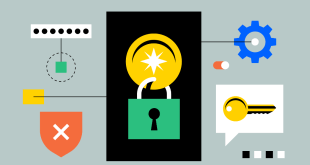In the ever-evolving digital landscape, website security remains a paramount concern for businesses and individuals alike. Cyber threats are becoming more sophisticated, and it’s crucial to stay one step ahead. Enter HTTPS 2.0, a powerful security protocol that enhances website security and performance. In this comprehensive blog, we delve into the world of HTTPS 2.0, exploring its benefits, functionality, and how it can bolster your website’s defenses.
What is HTTPS 2.0?
HTTPS 2.0, short for Hypertext Transfer Protocol Secure 2.0, is the latest version of the HTTPS protocol. It builds upon its predecessor, HTTPS 1.1, addressing its limitations and significantly improving website security. This updated protocol employs advanced encryption algorithms, ensuring that data exchanged between a user’s browser and the website’s server remains confidential and secure.
HTTPS 2.0 also introduces multiplexing, which allows multiple data streams to be transmitted simultaneously, resulting in faster page loading times. This improvement in performance is crucial as website speed is a critical factor for both user experience and search engine rankings.
How HTTPS 2.0 Works
HTTPS 2.0 employs Transport Layer Security (TLS) to secure the connection between the user and the server. When a user attempts to access a website with HTTPS 2.0 enabled, the following process takes place:
TLS Handshake:
The user’s browser initiates a TLS handshake with the website’s server, exchanging cryptographic keys to establish a secure connection.
Encryption:
Once the secure connection is established, all data transmitted between the user and the server is encrypted, ensuring that any sensitive information, such as login credentials or credit card details, remains protected from prying eyes.
Multiplexing:
One of the standout features of HTTPS 2.0 is multiplexing, which allows multiple data streams to be sent over a single connection simultaneously. This efficient data transfer results in faster loading times and an overall improved user experience.
Server Push:
With HTTPS 2.0, servers can proactively send resources to the user’s browser before they are requested, further speeding up page load times.
Advantages of HTTPS 2.0
Enhanced Website Security:
The primary purpose of HTTPS 2.0 is to fortify website security. By encrypting data and employing advanced cryptographic algorithms, it prevents unauthorized access, data theft, and tampering of information, thereby safeguarding user privacy.
Improved Page Loading Speeds:
With multiplexing and server push, HTTPS 2.0 significantly enhances website performance. Faster loading times not only lead to better user experiences but also contribute to higher search engine rankings, as page speed is a crucial ranking factor.
Increased Search Engine Visibility:
Search engines prioritize secure websites with HTTPS 2.0, boosting their rankings in search results. This visibility improvement can drive more organic traffic to your website.
Trust and Credibility:
Implementing HTTPS 2.0 signals to users that your website takes security seriously. This fosters trust and confidence in your brand, leading to increased customer loyalty and conversion rates.
Mobile-Friendly and SEO Benefits:
HTTPS 2.0 is particularly beneficial for mobile users. Faster loading times and better performance on mobile devices lead to improved SEO rankings, as search engines prioritize mobile-friendly websites.
How to Implement HTTPS 2.0
Migrating to HTTPS 2.0 may seem like a daunting task, but with proper planning and execution, it can be a smooth process. Here’s a step-by-step guide to implementing HTTPS 2.0 for your website:
Obtain an SSL/TLS Certificate:
To enable HTTPS 2.0, you need an SSL/TLS certificate. This digital certificate authenticates your website’s identity and encrypts data between the server and the user’s browser. Obtain the certificate from a reputable Certificate Authority (CA).
Choose the Right Certificate Type:
There are different types of SSL/TLS certificates available, such as Extended Validation (EV), Organization Validated (OV), and Domain Validated (DV). Choose the one that aligns with your security needs and budget.
Install the Certificate on Your Server:
Once you have the certificate, install it on your web server. Many hosting providers offer guides or automated tools to assist with the installation process.
Update Website Links and Resources:
Ensure that all internal links and resources (such as images, scripts, and stylesheets) on your website use HTTPS URLs instead of HTTP. Mixed content (HTTP and HTTPS) can cause security warnings and degrade the user experience.
Configure Server Settings:
Optimize your server settings to support HTTP/2, the underlying protocol for HTTPS 2.0. Verify that server push and multiplexing are enabled for maximum performance benefits.
Update Your Content Management System (CMS):
If you use a CMS like WordPress, update its settings to force HTTPS on all pages and posts.
Update Your Robots.txt File:
Adjust your website’s robots.txt file to allow search engine crawlers to access the HTTPS version of your site.
Update Your Sitemap:
Submit an updated XML sitemap to search engines to reflect the change to HTTPS URLs.
Test and Monitor:
After implementing HTTPS 2.0, thoroughly test your website to ensure everything functions correctly. Monitor its performance regularly to identify any issues and promptly address them.
Frequently Asked Questions (FAQs)
Q1. What if my website already has HTTPS 1.1? Is it necessary to upgrade to HTTPS 2.0?
If your website already has HTTPS 1.1, you have taken an important step towards securing your website. While HTTPS 1.1 provides encryption and security, upgrading to HTTPS 2.0 offers additional performance benefits through multiplexing and server push. This upgrade is especially beneficial if you prioritize faster loading times and a superior user experience.
Q2. Can HTTPS 2.0 prevent all cyberattacks?
While HTTPS 2.0 significantly improves website security, it is not a guarantee against all cyberattacks. It helps protect against data interception and tampering, but other security measures, such as firewall protection and regular security audits, are essential to bolster overall website security.
Q3. Will HTTPS 2.0 affect my website’s SEO rankings?
Yes, migrating to HTTPS 2.0 can positively impact your SEO rankings. Search engines prioritize secure and fast-loading websites, and HTTPS 2.0 addresses both these aspects. Improved rankings can lead to higher organic traffic and better visibility in search engine results.
Q4. How often should I renew my SSL/TLS certificate?
SSL/TLS certificates typically have a validity period of one to two years. To maintain uninterrupted security, it is essential to renew your certificate before it expires. Many CAs offer automated renewal services to ensure seamless certificate management.
Q5. Are there any downsides to using HTTPS 2.0?
While the benefits of HTTPS 2.0 outweigh the drawbacks, one potential downside is that it requires slightly more server resources than HTTP. However, the performance gains and security enhancements justify this increase in resource usage.
Final Words
In an era where cyber threats lurk around every corner of the internet, website security is not a choice but a necessity. HTTPS 2.0 offers a robust solution to safeguard your website and your users’ data while also providing a substantial performance boost. By implementing HTTPS 2.0, you can bolster your website’s defenses, gain search engine visibility, and build trust with your audience, all while delivering a seamless and secure browsing experience.
 webfily
webfily



